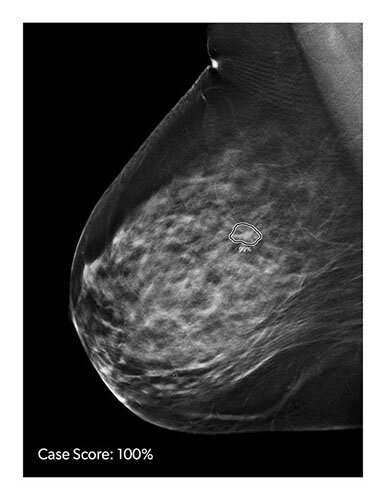Asymptomatic, CT Angiography-Detected CAD Linked to 8-Fold Higher Heart Attack Risk
|
By MedImaging International staff writers Posted on 29 Mar 2023 |

The biological process of coronary atherosclerosis is responsible for the onset of myocardial infarction, which together comprise the clinical syndrome known as "ischemic heart disease." Subclinical coronary atherosclerosis precedes ischemic heart disease and may develop at a young age, many years prior to the onset of clinical disease. For over five decades, obstructive coronary artery disease has been considered a significant risk factor, characterized by a luminal coronary stenosis of 50% or more. In recent years, however, the extent of atherosclerosis in the coronary tree, as well as specific morphologic characteristics of the atherosclerotic plaque, have been recognized as crucial risk factors.
A study conducted by researchers from the University of Copenhagen (Copenhagen, Denmark) on a cohort of over 9,000 individuals has found that subclinical, obstructive coronary atherosclerosis is linked to more than an eight-fold increased risk of myocardial infarction in asymptomatic middle-aged individuals without any known cardiovascular disease. The study's researchers examined 9,533 asymptomatic individuals aged 40 years or older with no previous history of cardiovascular disease to identify subclinical coronary atherosclerosis characteristics associated with myocardial infarction development. Computed tomography angiography (CTA) was used to diagnose obstructive coronary atherosclerosis in the participants.
The study revealed that 54% of individuals did not have any subclinical coronary atherosclerosis, while 46% did. Of those diagnosed with subclinical coronary atherosclerosis, 36% had non-obstructive disease and 10% had obstructive disease. Additionally, among those diagnosed with the condition, 61% of males and 36% of females had subclinical coronary atherosclerosis. The researchers concluded that identifying luminal obstructive or extensive subclinical coronary atherosclerosis could offer valuable risk assessment in patients without suspected or known ischemic heart disease who are undergoing cardiac CT and/or electrocardiogram-gated chest CT for other clinical reasons.
The team believes that their research presents an opportunity to study the contemporary natural history of coronary artery disease without any intervention, where both patients and clinicians are unaware of the scan results. The research also provides crucial insights into the rate of events and prevalence of asymptomatic coronary artery disease, which can help healthcare professionals develop targeted preventative therapies and implement effective public health prevention strategies by screening individuals with an underlying risk of coronary artery disease.
Related Links:
University of Copenhagen
Latest General/Advanced Imaging News
- New AI Method Captures Uncertainty in Medical Images
- CT Coronary Angiography Reduces Need for Invasive Tests to Diagnose Coronary Artery Disease
- Novel Blood Test Could Reduce Need for PET Imaging of Patients with Alzheimer’s
- CT-Based Deep Learning Algorithm Accurately Differentiates Benign From Malignant Vertebral Fractures
- Minimally Invasive Procedure Could Help Patients Avoid Thyroid Surgery
- Self-Driving Mobile C-Arm Reduces Imaging Time during Surgery
- AR Application Turns Medical Scans Into Holograms for Assistance in Surgical Planning
- Imaging Technology Provides Ground-Breaking New Approach for Diagnosing and Treating Bowel Cancer
- CT Coronary Calcium Scoring Predicts Heart Attacks and Strokes
- AI Model Detects 90% of Lymphatic Cancer Cases from PET and CT Images
- Breakthrough Technology Revolutionizes Breast Imaging
- State-Of-The-Art System Enhances Accuracy of Image-Guided Diagnostic and Interventional Procedures
- Catheter-Based Device with New Cardiovascular Imaging Approach Offers Unprecedented View of Dangerous Plaques
- AI Model Draws Maps to Accurately Identify Tumors and Diseases in Medical Images
- AI-Enabled CT System Provides More Accurate and Reliable Imaging Results
- Routine Chest CT Exams Can Identify Patients at Risk for Cardiovascular Disease
Channels
Radiography
view channel
Novel Breast Imaging System Proves As Effective As Mammography
Breast cancer remains the most frequently diagnosed cancer among women. It is projected that one in eight women will be diagnosed with breast cancer during her lifetime, and one in 42 women who turn 50... Read more
AI Assistance Improves Breast-Cancer Screening by Reducing False Positives
Radiologists typically detect one case of cancer for every 200 mammograms reviewed. However, these evaluations often result in false positives, leading to unnecessary patient recalls for additional testing,... Read moreMRI
view channel
PET/MRI Improves Diagnostic Accuracy for Prostate Cancer Patients
The Prostate Imaging Reporting and Data System (PI-RADS) is a five-point scale to assess potential prostate cancer in MR images. PI-RADS category 3 which offers an unclear suggestion of clinically significant... Read more
Next Generation MR-Guided Focused Ultrasound Ushers In Future of Incisionless Neurosurgery
Essential tremor, often called familial, idiopathic, or benign tremor, leads to uncontrollable shaking that significantly affects a person’s life. When traditional medications do not alleviate symptoms,... Read more
Two-Part MRI Scan Detects Prostate Cancer More Quickly without Compromising Diagnostic Quality
Prostate cancer ranks as the most prevalent cancer among men. Over the last decade, the introduction of MRI scans has significantly transformed the diagnosis process, marking the most substantial advancement... Read moreUltrasound
view channel
Deep Learning Advances Super-Resolution Ultrasound Imaging
Ultrasound localization microscopy (ULM) is an advanced imaging technique that offers high-resolution visualization of microvascular structures. It employs microbubbles, FDA-approved contrast agents, injected... Read more
Novel Ultrasound-Launched Targeted Nanoparticle Eliminates Biofilm and Bacterial Infection
Biofilms, formed by bacteria aggregating into dense communities for protection against harsh environmental conditions, are a significant contributor to various infectious diseases. Biofilms frequently... Read moreNuclear Medicine
view channel
New SPECT/CT Technique Could Change Imaging Practices and Increase Patient Access
The development of lead-212 (212Pb)-PSMA–based targeted alpha therapy (TAT) is garnering significant interest in treating patients with metastatic castration-resistant prostate cancer. The imaging of 212Pb,... Read moreNew Radiotheranostic System Detects and Treats Ovarian Cancer Noninvasively
Ovarian cancer is the most lethal gynecological cancer, with less than a 30% five-year survival rate for those diagnosed in late stages. Despite surgery and platinum-based chemotherapy being the standard... Read more
AI System Automatically and Reliably Detects Cardiac Amyloidosis Using Scintigraphy Imaging
Cardiac amyloidosis, a condition characterized by the buildup of abnormal protein deposits (amyloids) in the heart muscle, severely affects heart function and can lead to heart failure or death without... Read moreImaging IT
view channel
New Google Cloud Medical Imaging Suite Makes Imaging Healthcare Data More Accessible
Medical imaging is a critical tool used to diagnose patients, and there are billions of medical images scanned globally each year. Imaging data accounts for about 90% of all healthcare data1 and, until... Read more
Global AI in Medical Diagnostics Market to Be Driven by Demand for Image Recognition in Radiology
The global artificial intelligence (AI) in medical diagnostics market is expanding with early disease detection being one of its key applications and image recognition becoming a compelling consumer proposition... Read moreIndustry News
view channel
Bayer and Google Partner on New AI Product for Radiologists
Medical imaging data comprises around 90% of all healthcare data, and it is a highly complex and rich clinical data modality and serves as a vital tool for diagnosing patients. Each year, billions of medical... Read more





















